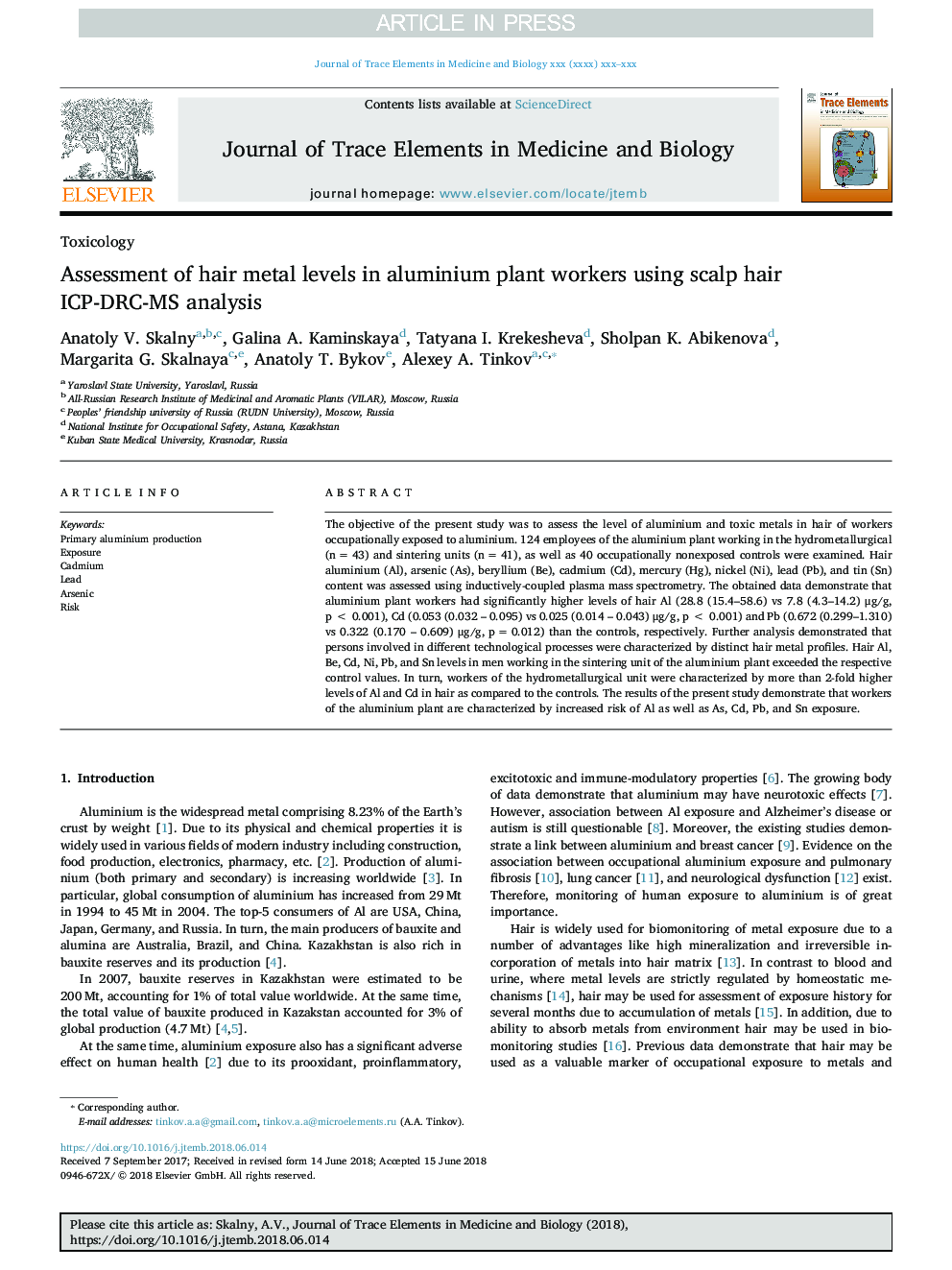| Article ID | Journal | Published Year | Pages | File Type |
|---|---|---|---|---|
| 11005747 | Journal of Trace Elements in Medicine and Biology | 2018 | 6 Pages |
Abstract
The objective of the present study was to assess the level of aluminium and toxic metals in hair of workers occupationally exposed to aluminium. 124 employees of the aluminium plant working in the hydrometallurgical (nâ¯=â¯43) and sintering units (nâ¯=â¯41), as well as 40 occupationally nonexposed controls were examined. Hair aluminium (Al), arsenic (As), beryllium (Be), cadmium (Cd), mercury (Hg), nickel (Ni), lead (Pb), and tin (Sn) content was assessed using inductively-coupled plasma mass spectrometry. The obtained data demonstrate that aluminium plant workers had significantly higher levels of hair Al (28.8 (15.4-58.6) vs 7.8 (4.3-14.2) μg/g, pâ¯<â¯0.001), Cd (0.053 (0.032 - 0.095) vs 0.025 (0.014 - 0.043) μg/g, pâ¯<â¯0.001) and Pb (0.672 (0.299-1.310) vs 0.322 (0.170 - 0.609) μg/g, pâ¯=â¯0.012) than the controls, respectively. Further analysis demonstrated that persons involved in different technological processes were characterized by distinct hair metal profiles. Hair Al, Be, Cd, Ni, Pb, and Sn levels in men working in the sintering unit of the aluminium plant exceeded the respective control values. In turn, workers of the hydrometallurgical unit were characterized by more than 2-fold higher levels of Al and Cd in hair as compared to the controls. The results of the present study demonstrate that workers of the aluminium plant are characterized by increased risk of Al as well as As, Cd, Pb, and Sn exposure.
Related Topics
Physical Sciences and Engineering
Chemistry
Analytical Chemistry
Authors
Anatoly V. Skalny, Galina A. Kaminskaya, Tatyana I. Krekesheva, Sholpan K. Abikenova, Margarita G. Skalnaya, Anatoly T. Bykov, Alexey A. Tinkov,
